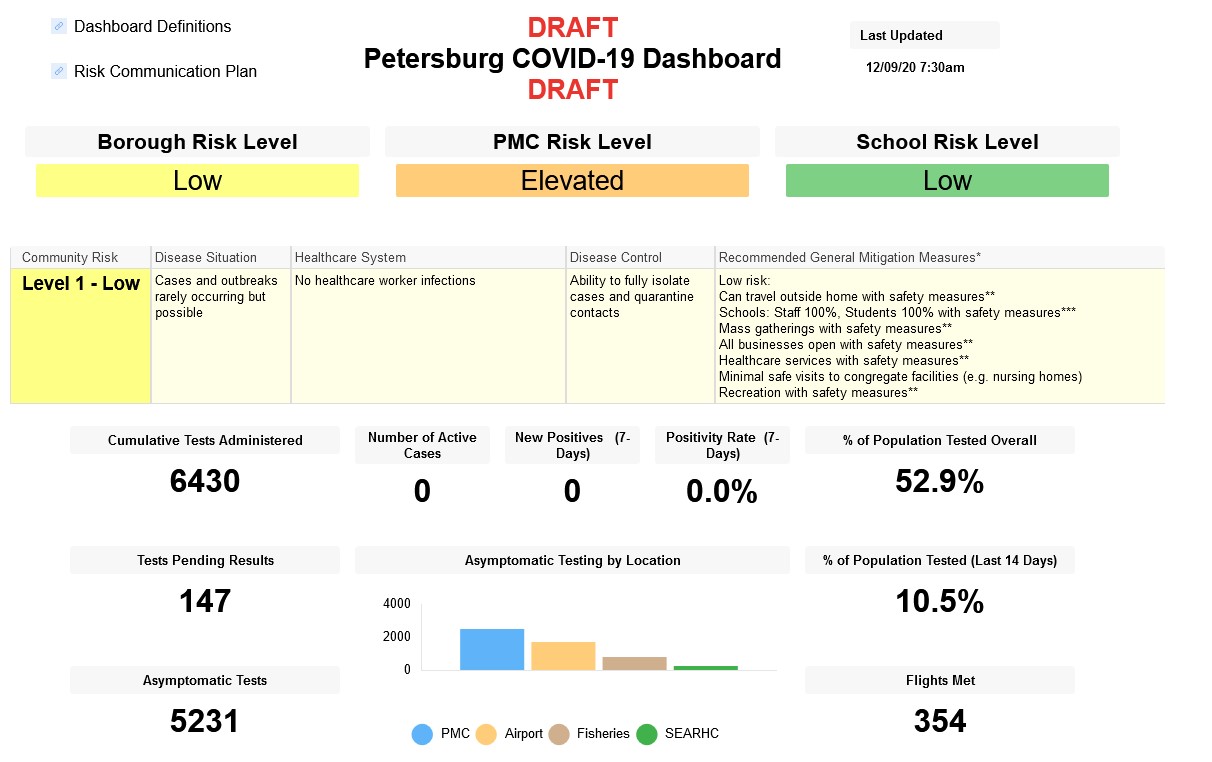
The Petersburg borough this month rolled out an online health dashboard and draft community plan for COVID-19 mitigation measures. That plan includes local guidelines for health measures to slow the spread of coronavirus as case numbers rise or fall.
Petersburg’s case numbers have remained low even as they’ve spiked in other parts of the Alaska and the rest of the country. Local officials continue to hear opposition to COVID testing and mandated health measures.
“You can start to see that this whole emergency starts to feel like a charade or a façade, or smoke and mirrors,” said local resident Sarah Reid, among those testifying to the borough assembly this month. “So I’m pleading to you to let’s stop. Let’s stop going over the cliff like everyone else in the world seems to be doing. Let’s do our own thing. Let’s run our own course. Let’s stop marching to the beat of someone else’s drum. Let’s stop with the mandates and let’s start coming together and being a community again and doing things together and having Christmas dinners together.”
To that end the borough’s emergency operations center has issued guidance on celebrating the holidays and is encouraging community members to avoid crowded indoor gatherings and limiting close contact with those outside of a household.
Petersburg Medical Center CEO Phil Hofstetter updated the assembly on efforts to limit virus spread.
“Right now if the worse case is I get some criticism on my recommendations I think I’m OK with that, especially as it creeps in within the state,” Hofstetter said. “Our staff are working countless hours. We’re trying to see patients safely during a pandemic. There’s nothing about this virus that is easy. We’re very fortunate to keep our cases low and we’re going to be pushing very hard to keep those low.”
The borough’s EOC has published a dashboard online that lists case and testing numbers and risk levels based on case counts for the community, hospital and schools. Incident commander Karl Hagerman told the assembly he hoped it would not be confusing.
“The purpose of the dashboard is to lay it all out there and show where the school and the hospital and the community are all at the same time and I’m hoping with that transparency that it will be clear what is going on as far as the disease situation in Petersburg,” Hagerman explained.
That dashboard is online and will be updated daily. Along with the dashboard is a risk communication plan with recommended health measures for low, medium and high risk. A level three or high risk situation could mean a stay at home recommendation, along with guidance for essential businesses to limit customers or schools to revert to online learning.
“You’ll see a number of risk indicators that go into determining what the current risk level is for Petersburg and the thresholds for each of those indicators going up or down depending on the status of that particular item,” Hagerman said.
There are similar plans in place for the medical center and schools. This dashboard includes the risk status for all three. And Hagerman has made clear that the community, schools or hospital could be at different risk levels depending on COVID cases and risk of spread in each of the three.
Assembly member Jeff Meucci asked to have the same colors noting the same risk levels at all three community fixtures. And assembly member Chelsea Tremblay appreciated the dashboard could be used by others in the community.
“This is a really great informative tool that anybody in charge of public spaces, public facing businesses that try to organize people around, I think this is a really useful guide for knowing when to exercise extra caution as opposed to the current standard form of caution given the state of the global pandemic that we’re in,” Tremblay said.
The plan is only guidance and the mitigation measures are not enacted automatically. Instead future mandates would require decisions by the assembly, manager or incident commander.
The borough currently has a mask mandate in place. Hagerman told the assembly that order, passed in November, seems to have increased use of face coverings in some settings and decreased it in others.
The assembly could vote on adopting this risk plan and dashboard at their next meeting this month but may delay that vote depending on their questions and public input.









